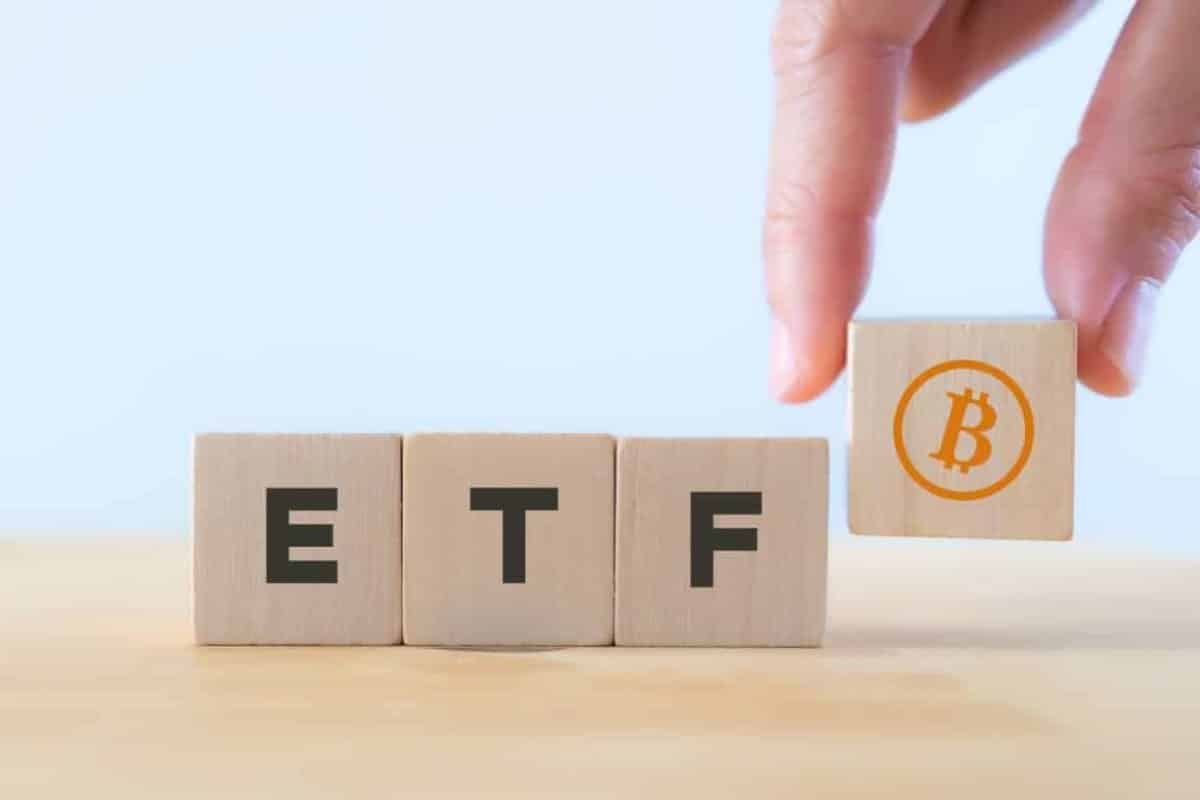🔒 Unlocking the Power of Zero-Knowledge Proofs in Web3
Zero-knowledge proofs (ZKPs) enable users on cryptographic networks to confirm the accuracy of a transaction without divulging the specific details of the transaction.What Are Zero-Knowledge Proofs?’ is asking for a condensed English version.
This is partner content sourced from Laura Shin’s Unchained and published by Blocking.net.
Imagine being able to prove the validity of a transaction without revealing any sensitive details. 🕶️ That’s where zero-knowledge proofs (ZKPs) come into play. These clever protocols allow us to authenticate information without compromising privacy. In this article, we’ll explore what zero-knowledge proofs are, how they work, and why they’re crucial in the world of Web3. So keep reading to unravel the mysteries of this fascinating cryptographic tool!
What Are Zero-Knowledge Proofs? 🤔
Zero-Knowledge Proofs (ZKPs) are protocols that validate statements on blockchains without exposing any information that could compromise privacy. This means we can verify the authenticity of a transaction without revealing its intricate details. Here’s an analogy to help you wrap your head around it:
Imagine going through airport security. 🛫 You need to prove your identity, but instead of handing over your driver’s license and other personal information, you use a magic trick. You show the security personnel a series of incredible card tricks, proving that you are indeed who you claim to be. They are convinced of your identity without actually seeing any identification documents. That’s the power of zero-knowledge proofs!
- The SEC Approves the First Bitcoin ETF: A Step Towards Mainstream Adoption
- 🚀 The SEC Approves Bitcoin ETFs: What It Means for the Crypto Industry 🚀
- 🚀 First Bitcoin ETFs Approved in the U.S. – A Game-Changer for Crypto Investors! 🎉
With zero-knowledge proofs, we can protect our personally identifiable information (PII) from falling into the wrong hands or being misused. This not only prevents identity theft and reputational damage but also avoids potential discrimination.
How Do Zero-Knowledge Proofs Work? 🛠️
Zero-knowledge proofs rely on algorithms to process input data and confirm its truthfulness. Some well-known projects that utilize these protocols are StarkNet on Ethereum, Polygon Zero, and Zk Sync. But for zero-knowledge proofs to be effective, they need to meet three criteria:
- Zero-knowledge: The verifier can’t access the original input. They can only determine the statement’s validity.
- Soundness: The protocol can’t validate false information as true. It ensures the prover can’t manipulate the verifier into accepting a false statement.
- Completeness: If the input is valid, the protocol always confirms the statement. As long as both parties act honestly and the underlying information is true, the proof is accepted.
To understand how zero-knowledge proofs work, let’s break it down into three elements:
- Witness: This is the secret information known only to the prover. They provide questions that only someone with access to the information would be able to answer.
- Challenge: The verifier selects a question from the set for the prover to answer.
- Response: The prover answers the question, providing evidence of their knowledge. The verifier confirms that the prover can access the witness. This process repeats with multiple questions, making it challenging for the prover to fake knowledge of the information.
Types of Zero-Knowledge Proofs 🎭
There are two main types of zero-knowledge proofs: interactive and non-interactive.
Interactive Zero-Knowledge Proofs 👥
Interactive zero-knowledge proofs allow back-and-forth communication between two parties. This communication ensures that the verifier is completely satisfied with the validation of the statement’s validity.
Non-Interactive Zero-Knowledge Proofs 🔄
Non-interactive zero-knowledge proofs involve only one communication round between the prover and verifier. The prover shares the information with an algorithm that generates a zero-knowledge proof. The verifier then uses another algorithm to confirm the prover’s knowledge.
Many available protocols fall under the non-interactive category due to its convenience. Let’s take a look at a few of them:
- ZK-SNARKs: These Zero-Knowledge Succinct Non-Interactive Argument of Knowledge protocols utilize elliptical curves to generate gas-efficient cryptographic proofs.
- ZK-STARKs: Zero-Knowledge Scalable Transparent Argument of Knowledge protocols are fast and involve minimal interaction between parties.
- Bulletproofs: These protocols are short and non-interactive, enabling private cryptocurrency transactions without requiring a trusted setup.
- PLONK: Permutations over Lagrange bases for Oecumenical Non-interactive arguments of Knowledge protocols allow a large number of participants through a universal trusted setup.
Why Do We Need Zero-Knowledge Proofs? 🌐
Zero-knowledge proofs serve various critical purposes in the world of Web3. Let’s dive into a few of the most important ones:
Security and Privacy 🔐
While Web3 offers pseudonymity, complete privacy is still a challenge since transaction history is publicly available on blockchains. Zero-knowledge proofs solve this problem by providing information verification without revealing personally identifiable information (PII), ensuring anonymity.
Identity Verification 🆔
Proving identity shouldn’t require sharing sensitive information. With zero-knowledge proofs, we can carry out the identity verification process privately and securely, without compromising our personal data.
Scalability ⚙️
Zero-knowledge proofs allow blockchain networks to verify transactions without exposing the underlying data. By reducing the information stored on the blockchain, these proofs enhance the efficiency and scalability of the network.
Compliance 💼
Organizations often need to comply with regulatory requirements regarding money laundering, Know Your Customer (KYC) procedures, and other applicable laws. Zero-knowledge proofs enable organizations to meet these requirements without storing users’ personal information on centralized databases.
In a world where information verification is of utmost importance, zero-knowledge proofs emerge as a revolutionary solution. With their promise of fast and secure transactions, they address the pain points of Web3’s pseudonymous landscape.
💡 Q&A
Q: How do zero-knowledge proofs protect privacy on public blockchains?
A: Zero-knowledge proofs allow users to verify information without having to reveal sensitive details. By securely validating the authenticity of transactions without exposing personally identifiable information (PII), zero-knowledge proofs maintain privacy on public blockchains. 🙅♀️
Q: Are zero-knowledge proofs only used for transaction verification?
A: No, zero-knowledge proofs have various use cases beyond transaction verification. They can be employed for identity verification, compliance with regulations, and even enhancing scalability in blockchain networks. 🚀
Q: How do non-interactive zero-knowledge proofs differ from interactive ones?
A: Non-interactive zero-knowledge proofs involve only one round of communication between the prover and verifier. On the other hand, interactive zero-knowledge proofs allow back-and-forth communication. Both types have their advantages and applications depending on the specific use case. 🔄
Q: Can zero-knowledge proofs completely eliminate the need for centralized databases?
A: Zero-knowledge proofs provide an alternative solution to storing personal information on centralized databases. By using proof validation techniques, organizations can comply with regulations without compromising users’ privacy. However, there are cases where centralized databases might still be required due to specific legal or operational requirements. 🏢
✨ Recommended Links: – What Are Zero-Knowledge Proofs? – Understanding Zero-Knowledge Proofs – Zero-Knowledge Proofs: An Illustrated Primer – Explainer: Zero-Knowledge Proofs – Zero Knowledge Proofs: Explained in Video
In conclusion, zero-knowledge proofs are revolutionizing the way we authenticate information in Web3. With their ability to verify transactions, prove identities, enhance scalability, and ensure compliance, these cryptographic protocols have massive implications for our digital future. So next time you hear the term “zero-knowledge proofs,” remember that it’s not just about keeping secrets, but about unlocking a world of trust, privacy, and security.
🔓 Unlock the power of zero-knowledge proofs today and share this article with your friends! Let’s spread the knowledge and build a more secure Web3 together. 🌐✨
We will continue to update Blocking; if you have any questions or suggestions, please contact us!
Was this article helpful?
93 out of 132 found this helpful
Related articles
- The SEC Falls Victim to Market Manipulation: A Tale of Irony and Insecurity 🤷♂️🔒
- 💥 Spot Bitcoin ETFs: The Hype and Where to Find Value in the Crypto Ecosystem
- MakerDAO’s Endgame: Bringing Back “DeFi Summer” in an Interesting and Complicated Way
- The Bitcoin Ordinals Debate: To Fork or Not to Fork?
- 🚀 Breaking News: Spot Bitcoin and Ether ETFs Anticipated in 2024-2025 🎉
- How Jevon’s Paradox is Shaping the Future of Bitcoin Scaling
- 📈 Bitcoin ETFs: A Blessing or a Curse for Crypto?






